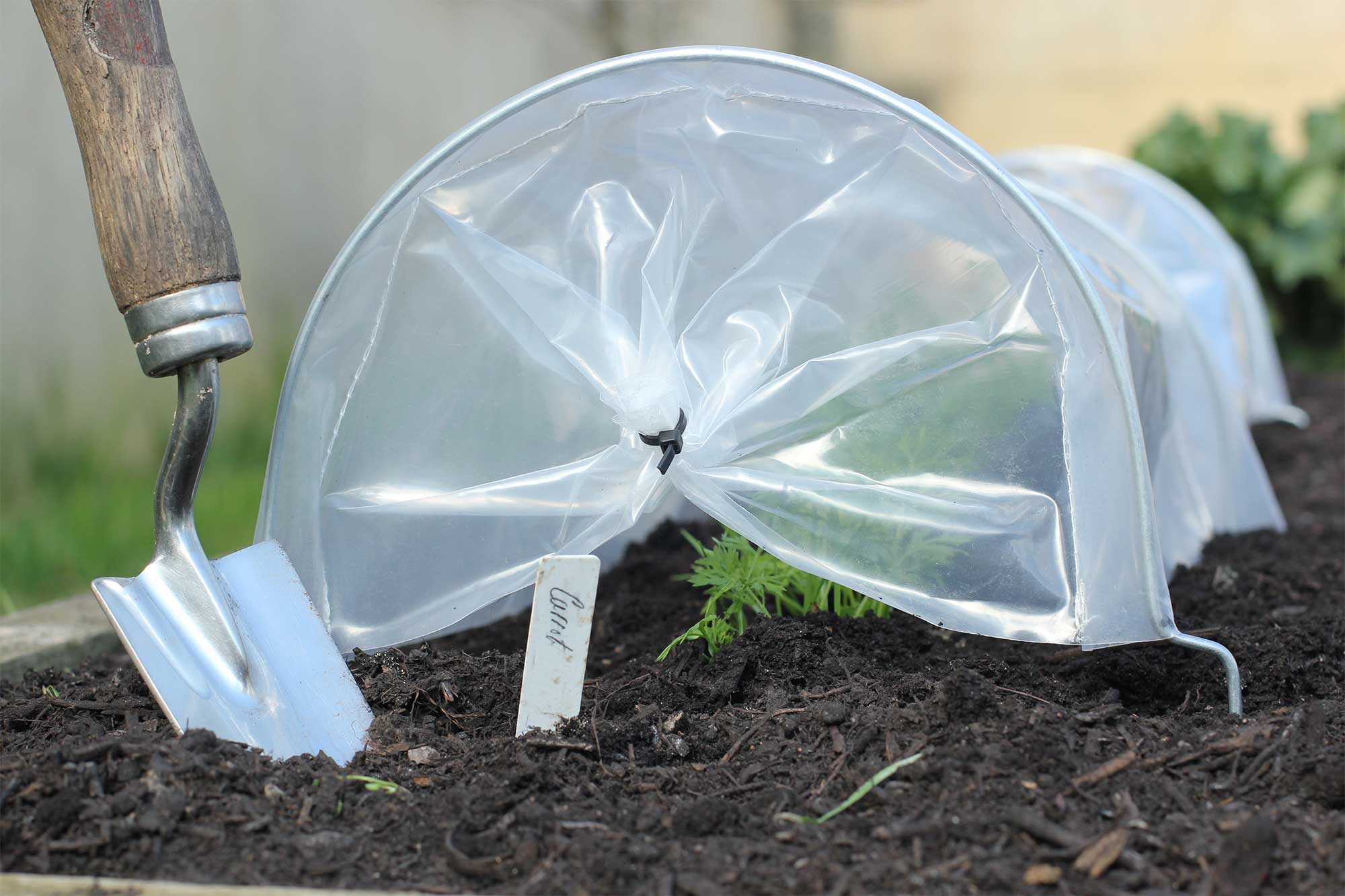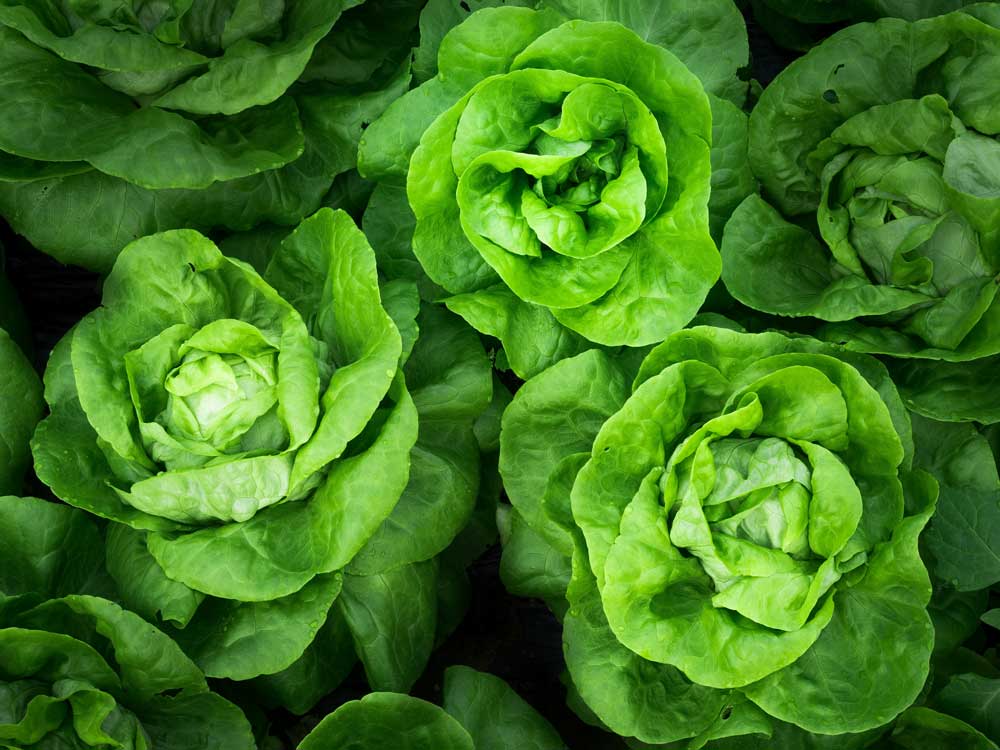As we begin to feel real signs of Spring in the air the excitement for a whole new gardening season is rising and we are all itching to get on and get planting - there’s nothing quite like sowing seeds to really feel Summer is on the horizon. However, there is probably not one of us who hasn’t been caught out by this enthusiasm and had our carefully nurtured early seedlings wiped out by an unexpected or late frost.

In general it can be well into May before all areas of the UK can be fairly confident that there won’t be an overnight dip which leaves seedlings and blossom vulnerable to show stopping damage - and if you’re in Scotland that could be even later. Starting off under glass and careful protection with fleece or cloches will allow you to get going with sowing and planting out earlier in the year and avoid the risk losing your plants during the inevitable last gasp of winter.  But there are some seeds that you can sow with confidence early in the season which will be hardy enough to survive a cold snap and by giving these spring-loving crops an early start, you should get a bumper harvest before the heat of summer risks them bolting. Read below a few crops that you can get started over the next few weeks.
But there are some seeds that you can sow with confidence early in the season which will be hardy enough to survive a cold snap and by giving these spring-loving crops an early start, you should get a bumper harvest before the heat of summer risks them bolting. Read below a few crops that you can get started over the next few weeks.
Onion Sets
Onions are pretty frost hardy and by planting ‘sets’ (rather than seed) you will have considerable head start on the season since they can be planted straight out in the garden as soon as the soil is able to be dug in early in spring. Onion sets are small and underdeveloped onion bulbs that were grown from seed the season before. Each bulb is about 1.5cm in size and are available at most garden centres having been dried for storage.
The sets will remain dormant, but safe, in temperatures down to -6°c and will grow away vigorously when the weather warms to around 12°c - normally by late March. Push onion sets into moistened soil no more than 4cms deep. Make sure the top of the onion is just poking its tip out of the soil - Space bulbs 15-20cm apart with 30 cm between rows. Onions can be harvested throughout the Summer and dried for storage at the end of the season.
Lettuce
Lettuce actually prefers the cool and moist conditions of early spring and will often need protection from strong sun later in the season so it is a great crop to get started early.
Once the soil has warmed to 4°c or above, lettuce seeds can be direct sown into the garden - try using a cloche or Easy Tunnel to warm the soil for extra early sowing.
Sow the tiny seeds thinly along the surface of ground and covering with a thin covering of soil no more than 1cm deep - using an Easy Riddle or sieve will help the seedlings get off to the best start. Once the seedlings are a few 5cm tall and have a set of true leaves, thin them out according to the lettuce type.Head lettuce varieties need spacing 15-30cm inches apart, leaf lettuce can be thinned to 10-15cm apart while Romaine and butterhead types need 15-20cm between them. Cut and Come Again varieties can be planted more densely in blocks rather than rows. Lettuce plants grow really well in temperatures of 7°-18°c so it’s a good idea to start early and sow lettuce seeds every two weeks throughout spring for successive harvests.

Kohlrabi
Kohlrabi is a rather extraordinary looking cold hardy biennial vegetable that produces green leaves above and a and mild sweet bulb below. As a member of the Brassica family, kohlrabi does well in cooler conditions and will readily germinate once soil temperatures are at least 7°c.
Plant kohlrabi seeds 1cm deep and 12cm apart, with 30cm between rows.
Although kohlrabi’s bulbous base looks like a root vegetable, this is actually the stem. It sits on top of the soil and swells in size as it matures. The bulbous base is actually part of the stem that sits on top of the soil and swells as the plant matures - Harvest kohlrabi when the stem is 6-10cm in diameter before it toughens and becomes woody over time.
Parsnips
Parsnips take around 4 months to mature, so if you can spare the space for these slower to mature crops then early sowing is a good idea. Parsnip seeds tolerate cold weather well and can be direct sown in the garden when soil temperatures 4°c - Loosen and prepare the top 30cm of soil down to give the roots room to grow and sprinkle seeds along a drill before lightly covering them with sieved soil. Seedlings have emerge in 2 to 3 weeks and can be thinned to 10cm apart with 40cm between rows. Parsnips are a crop that sweeten after a frost so leave them in the ground until late in the season before pulling for the best tasting harvest.
Seedlings have emerge in 2 to 3 weeks and can be thinned to 10cm apart with 40cm between rows. Parsnips are a crop that sweeten after a frost so leave them in the ground until late in the season before pulling for the best tasting harvest.
Kale
Kale is an amazingly nutritious and versatile crop crop yielding plenty of cut-and-come-again green leaves in early summer and then again in autumn.
For a spring harvest, kale seeds can be planted in the garden as soon as the soil is workable and needs a couple of months to mature so an early sowing will allow you to start harvesting in by early summer before hot weather risks them bolting -You can also harvest early for tender baby kale leaves to add to a salad.
Plant 1cm deep and thin seedlings after two weeks to 10-12cm apart for full size kale - a second planting in late summer will give you another harvest in the Autumn - for the sweetest kale wait until they have been exposed to a hard frost before harvesting.
Radishes
Radish is an extra speedy grower, maturing from seed to harvest in less than a month - perfect for filling any spare space between slower maturing crops for a colourful addition to your plot.
Sow radish seeds direct in early April and keep planting every 10 days for continuous radish harvests right into the summer. Plant radish seeds 1.5cm and 5-10cm apart with about 20cm between rows - although they can be squeezed into smaller spaces if you want to harvest them small.
Spinach
Spinach needs a sustained period of cool weather to develop from seed to leafy greens so is an ideal early crop, ready to harvest ahead of the main summer salad and crops.
Once the soil is workable sow spinach seeds in rows 2cm deep, thinning them to 10cm apart when plants are 5cm tall. Sow more spinach seeds every two weeks in spring for to get a bumper harvest before the hotter summer days which don’t suit it so well.
Rocket
Peppery Rocket leaves are softer and sweeter when grown in cooler conditions and can survive a light frost so start sowing early and harvest regularly. Sow seeds direct to a depth of 1cm with rows 20cm apart, thinning out seedlings to 15cm.
Rocket is ready to be harvested in 6 to 8 weeks and will thrive in spring temperatures - the younger leaves have a milder taste and develop more of a kick as they mature.

Beetroot
Beetroot are a vibrant, nutritious, and cold hardy crop that will cope with light Spring frosts. To aid germination, soak seeds in water for 24 hours and warm the soil with a polythene tunnel before sowing every 5cm in shallow drills 30cm apart.
Keep the soil moist and thin seedlings when they are 10cm tall to 10cm apart. Sow a new batch of beet seeds every 2 to 3 weeks until mid-summer for multiple harvests.
Swiss Chard
Swiss chard is robust leafy vegetable that is tolerant of both cooler and hot weather - Its growth will slow in hotter temperatures but perk back up as the weather cools down in autumn - it is happiest at 21°c or below.
Plant Swiss chard seeds when soil warming to around 10°c thinly in rows 20m apart - thin seedlings to 10-30cm apart depending if you are aiming for many smaller salad leaves or fewer larger plants for steaming as a vegetable. Chard is cut-and-come-again crop - harvest outer leaves through spring, summer, and autumn to keep it continuously productive.
Broccoli
Broccoli can take around 4 months to reach harvest point so it is good to give it as much time to grow before the tendency to bolt in summer. Although broccoli seeds will sprout in early spring when soil temperatures are as low as 4°c they will germinate better at 10°c and higher so it is worth trying an early crop and following up with a second sowing to guarantee success - using Easy Seedling Tunnels to warm the soil will help your early sowing establish. Sow 2cm deep at 10cm intervals between plantings and thin them to at least 30cm apart once there are 2 sets of true leaves - it needs lots of space to mature - ideally 60-70cm between plants. You can pick some of the broccoli leaves for a tasty and nutritious salad green and heads are best harvested when firm and dark green before they begin to loosen and flower.
Sow 2cm deep at 10cm intervals between plantings and thin them to at least 30cm apart once there are 2 sets of true leaves - it needs lots of space to mature - ideally 60-70cm between plants. You can pick some of the broccoli leaves for a tasty and nutritious salad green and heads are best harvested when firm and dark green before they begin to loosen and flower.
Carrots
Carrots enjoy warmer soil temperatures of 13°c or more but are worth starting early in a cloche or tunnel so that you can enjoy sweet baby carrots during early summer. Plant seeds thinly with 30cm between rows and lightly cover them with soil - if you can avoid needing to thin seedlings you will reduce the risk of attracting Carrot Fly and using a Micromesh Pest Barrier will add extra protection.
Peas
It’s a good idea to get your peas in the soil as soon as you can to make the most of their nitrogen fixing capability - they do well in cooler conditions and can withstand a light frost. Plant pea seeds 3cm deep, 5 cm apart, with 20cm between rows - succession sowing will give you a continuous crop and the plants will mature quickly once the soil temperature begins to rise.
Plant pea seeds 3cm deep, 5 cm apart, with 20cm between rows - succession sowing will give you a continuous crop and the plants will mature quickly once the soil temperature begins to rise.
Peas will need some support as they develop - use traditional pea sticks or Jute netting to allow them to scramble up to 1.5m. Peas will be ready to harvest in around 60 days - for the sweetest crop pick before the pods begin to toughen and go lighter in colour.







Leave a comment